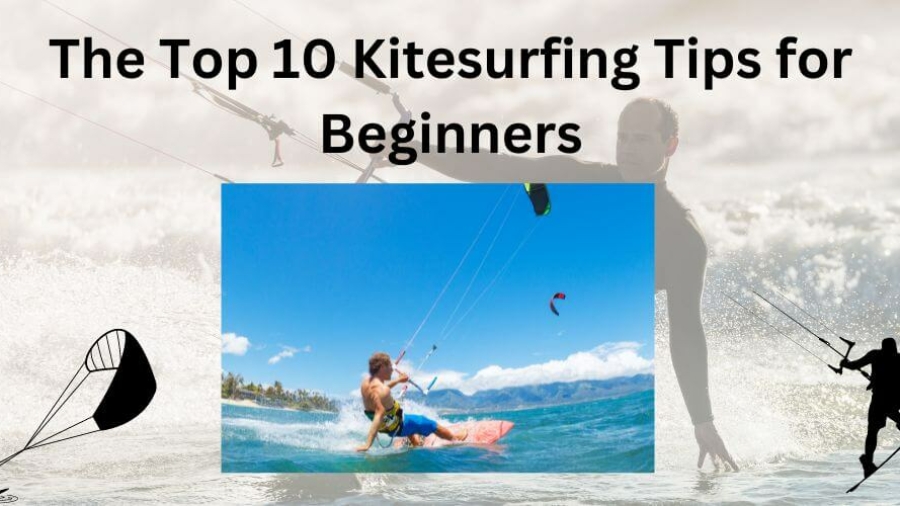Kitesurfing is the coolest wind-powered water sport for which, you just need water and wind, other than the kitesurfing equipment. Once learn the basics of kitesurfing, you can go faster, jump, even perform freestyle tricks while riding on the waves or going away from the coast. This journey can be enchanting and thrilling while also being challenging. As a beginner, when you navigate with confidence, you must know the important kitesurfing tips that will help you will you go ahead in your kitesurfing journey.
Top 10 Kitesurfing Tips for Beginners
While you progress on your kiteboarding journey, it is essential for you to remember the kiteboarding tips for beginners to save yourself from any accident and master the skill.
1. Be Patient
Mastering the kitesurfing sport takes time and a lot of practice. You have to be patient with yourself as you learn the techniques and skilled involved, to ride on the waves like a pro. Always remember that every rider progresses at their own pace – no one is learning it slow or fast. Take your time to first understand the fundamentals of the kitesurfing sport and build a strong foundation, before you master the advanced skills.
2. Do Not Pull the Bar
One of the most common mistakes that beginners make is pulling the bar too hard. You should instead focus on maintaining a steady and controlled grip of it to avoid losing control of your kite. While kitesurfing, just smooth and gentle movements are key to effortlessly enjoy the sport. You must practice controlling the kite’s power by gently steering it with your fingertips rather than yanking it on the bar.
3. Practice Recreational Flying
Recreational flying means you must first practice flying the kite with your feet on the ground, once you get a grip on that, then you move on to water. This will aid you in familiarizing yourself with the kite’s controls, which will help in building confidence in handling it. You can start at an open space that is away from obstacles for getting the grip with the kite. You can also experiment by flying the kite in different wind conditions and practice launching as well as landing techniques to be well prepared for real-world scenarios.
4. Hand Position is Important
You must pay attention to your hand position on the kite’s control bar. A proper hand placement will help you in maintaining control and stability on the kite while riding. Keeping your hands at the correct distance, which is apart for optimal control will aid in getting a proper control over the kite. Now, practice holding the bar with a relaxed grip and avoid gripping it too tightly, as this may lead to fatigue and loss of your control over the kite.
5. Always Try to Keep Some Tension in Your Steering Lines
Maintaining tension in your steering lines will give you better control over your kite and it will also allow you to navigate through the water effectively. However, you must avoid over-tensioning, as it may lead to rigidity which may again lead to losing kite’s control. Hence, you must practice maintaining a balanced tension in your lines by making subtle adjustments with your hands whenever required.
6. Have Some Kite Etiquette
Having kite etiquette means respecting other kitesurfers and beachgoers by properly following all the rules of kitesurfing. You must also give other riders plenty of space, and always move away from the riders who are riding upwind or closer to the wind. This comes under the 3-step kitesurfing safety system you must follow. Always be mindful of your surroundings and avoid crowded areas to be able to properly practice.
7. Fully Released Your Bar while Relaunching and Landing Your Kite
To relaunch or land your kite safely, you must ensure that your control bar is fully released by which you prevent any accidental power-ups or crashed. Always keep a firm grip on the safety leash to always maintain control of the kite. Practice a proper kite relaunching and landing techniques in controlled conditions before attempting them in more challenging situations.
8. Timing is Everything
Paying close eye on the wind conditions and timing your kitesurfing accordingly is key. You must learn to anticipate changes in the wind’s direction and speed, which will aid you in improving your overall performance on water. Also, you must adjust your movements, based on wind shifts and then practice timing your turns as well as your jumps to make the most of the available wind.
9. Use Your Legs to Stand Up
When you are learning to stand up on your board, use your legs to push yourself upright on the board. This will help you in maintaining balance and stability on the board as you transition from kneeling to standing. Also, keep your weight centered over the board and then, practice shifting your weight between your feet to maintain control on water. You must use your legs to absorb shock, to cushion your landings, this reduces the strain on your knees and ankles.
10. Be Confident and Have Fun
While you keep all the above kitesurfing tips in mind, approach the sport with confidence and positive mindset. Always be ready to embrace challenges, celebrate your progress, and more importantly, have fun on the water while enjoying the wind. Remember that every session is an opportunity for you, to learn and grow as a rider. Just stay focused on your goals, stay safe, and enjoy the freedom of riding over the waves.
Conclusion
When you learn the sport, you must keep all the kitesurfing tips in mind while practicing as well as while performing. This will help you in building a solid foundation of the skillset and techniques, with which you can propel through your kitesurfing journey. Remember to stay patient, stay safe, and on top of all, enjoy the thrilling sport while riding on the waves. With patience and dedicated practice, you will soon become a seasoned pro in kitesurfing.
